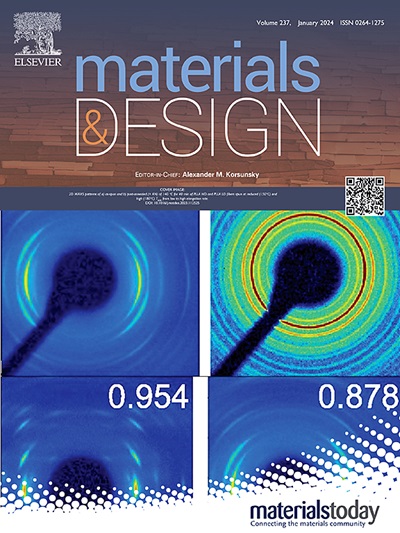Hydrolysis behavior and mechanism of AlON powders
IF 7.6
2区 材料科学
Q1 MATERIALS SCIENCE, MULTIDISCIPLINARY
引用次数: 0
Abstract
AlON-C (∼25 μm) powders were prepared using the carbothermal reduction and nitridation (CRN) method. The powders were subsequently processed through milling to obtain AlON-M (∼1.6 μm) and AlON-F (∼456 nm). The experimental results indicated that both AlON-M and AlON-F underwent hydrolysis to form Al(OH)3, and the degree of hydrolysis was positively correlated with the specific surface area. In addition, the hydrolysis degree of different morphology regions in AlON powders, from high to low, was smooth fracture, stepped surface, and tear fracture. This variation was attributed to differences in the atomic ratios of Al, O, and N within each hydrolytic morphology. It was worth noting that AlON-C with a smaller specific surface area did not undergo hydrolysis after prolonged contact with water, which contradicts theoretical expectations. Microstructure analysis showed that AlON-C has a complete and stable crystal structure, AlON-C possesses closely resembling the ideal AlON (Al23O27N5) composition, potentially explaining its exceptional resistance to hydrolysis. This article not only enriches the understanding of the hydrolysis mechanism of AlON powders, but also provides important structural control strategies for the preparation of AlON materials with specific hydrolysis activity.

AlON粉末的水解行为及机理
采用碳热还原和氮化(CRN)法制备了AlON-C (~ 25 μm)粉末。随后通过铣削加工粉末,得到AlON-M (~ 1.6 μm)和AlON-F (~ 456nm)。实验结果表明,AlON-M和AlON-F均经过水解生成Al(OH)3,且水解程度与比表面积呈正相关。此外,AlON粉末中不同形貌区域的水解程度由高到低依次为光滑断裂、台阶表面断裂和撕裂断裂。这种变化归因于每种水解形态中Al, O和N的原子比率的差异。值得注意的是,比表面积较小的AlON-C在与水长时间接触后没有发生水解,这与理论预期相矛盾。微观结构分析表明,AlON- c具有完整稳定的晶体结构,与理想的AlON (Al23O27N5)的组成非常接近,这可能解释了其优异的抗水解性能。本文不仅丰富了对AlON粉体水解机理的认识,而且为制备具有比水解活性的AlON材料提供了重要的结构控制策略。
本文章由计算机程序翻译,如有差异,请以英文原文为准。
求助全文
约1分钟内获得全文
求助全文
来源期刊

Materials & Design
Engineering-Mechanical Engineering
CiteScore
14.30
自引率
7.10%
发文量
1028
审稿时长
85 days
期刊介绍:
Materials and Design is a multi-disciplinary journal that publishes original research reports, review articles, and express communications. The journal focuses on studying the structure and properties of inorganic and organic materials, advancements in synthesis, processing, characterization, and testing, the design of materials and engineering systems, and their applications in technology. It aims to bring together various aspects of materials science, engineering, physics, and chemistry.
The journal explores themes ranging from materials to design and aims to reveal the connections between natural and artificial materials, as well as experiment and modeling. Manuscripts submitted to Materials and Design should contain elements of discovery and surprise, as they often contribute new insights into the architecture and function of matter.
 求助内容:
求助内容: 应助结果提醒方式:
应助结果提醒方式:


